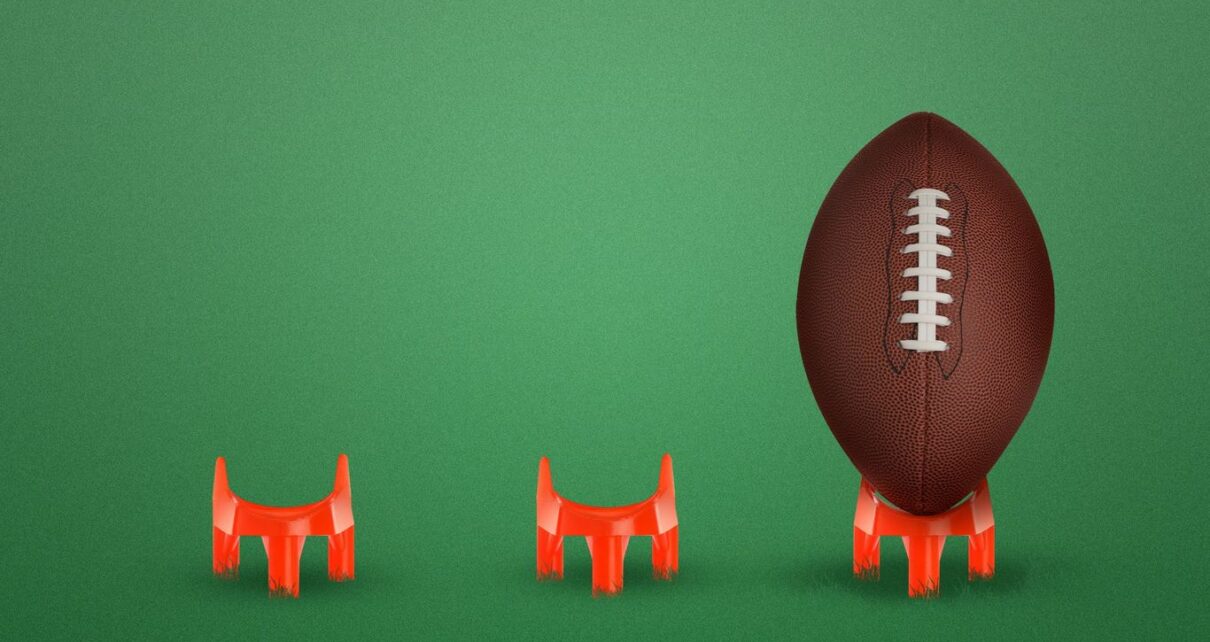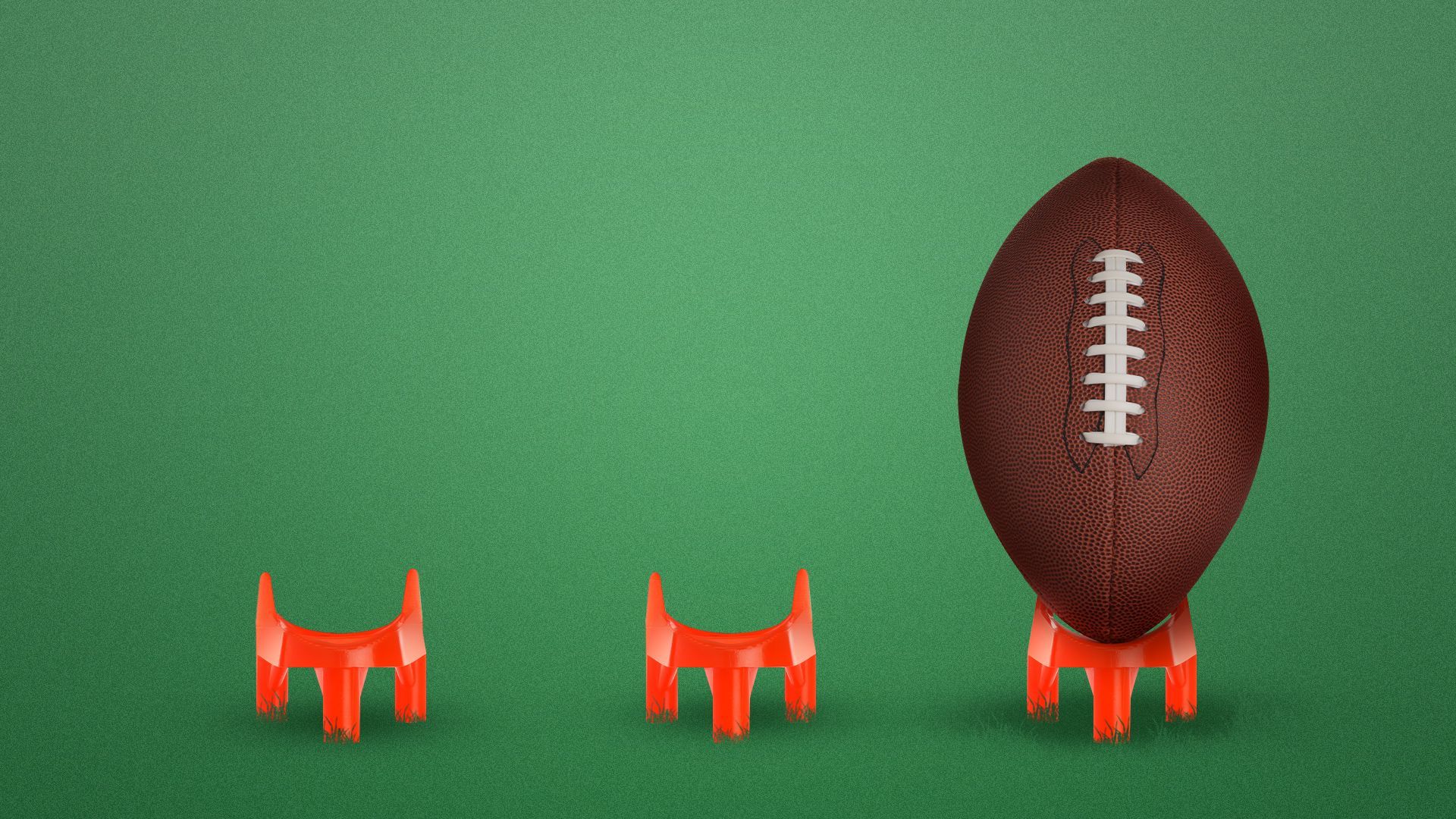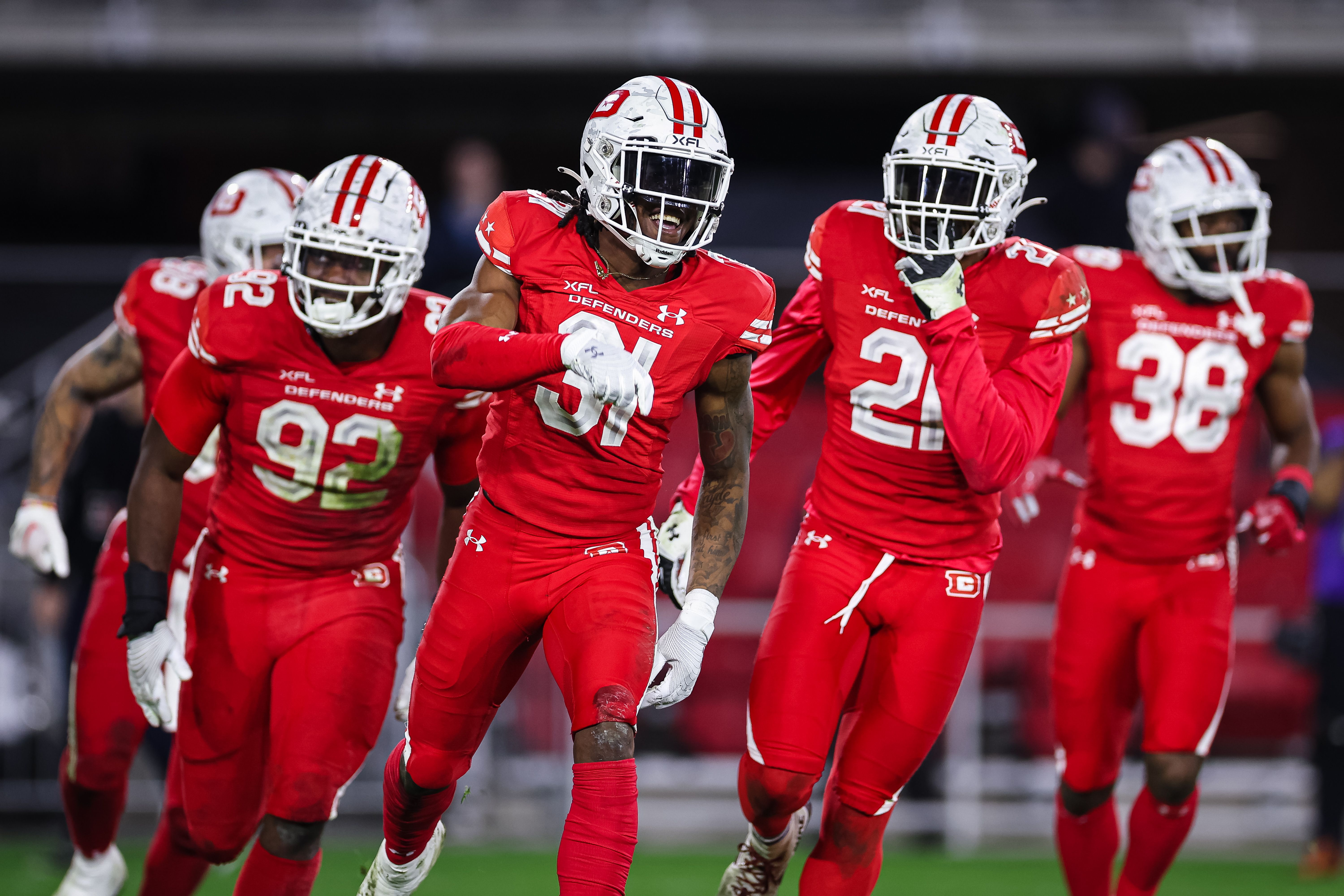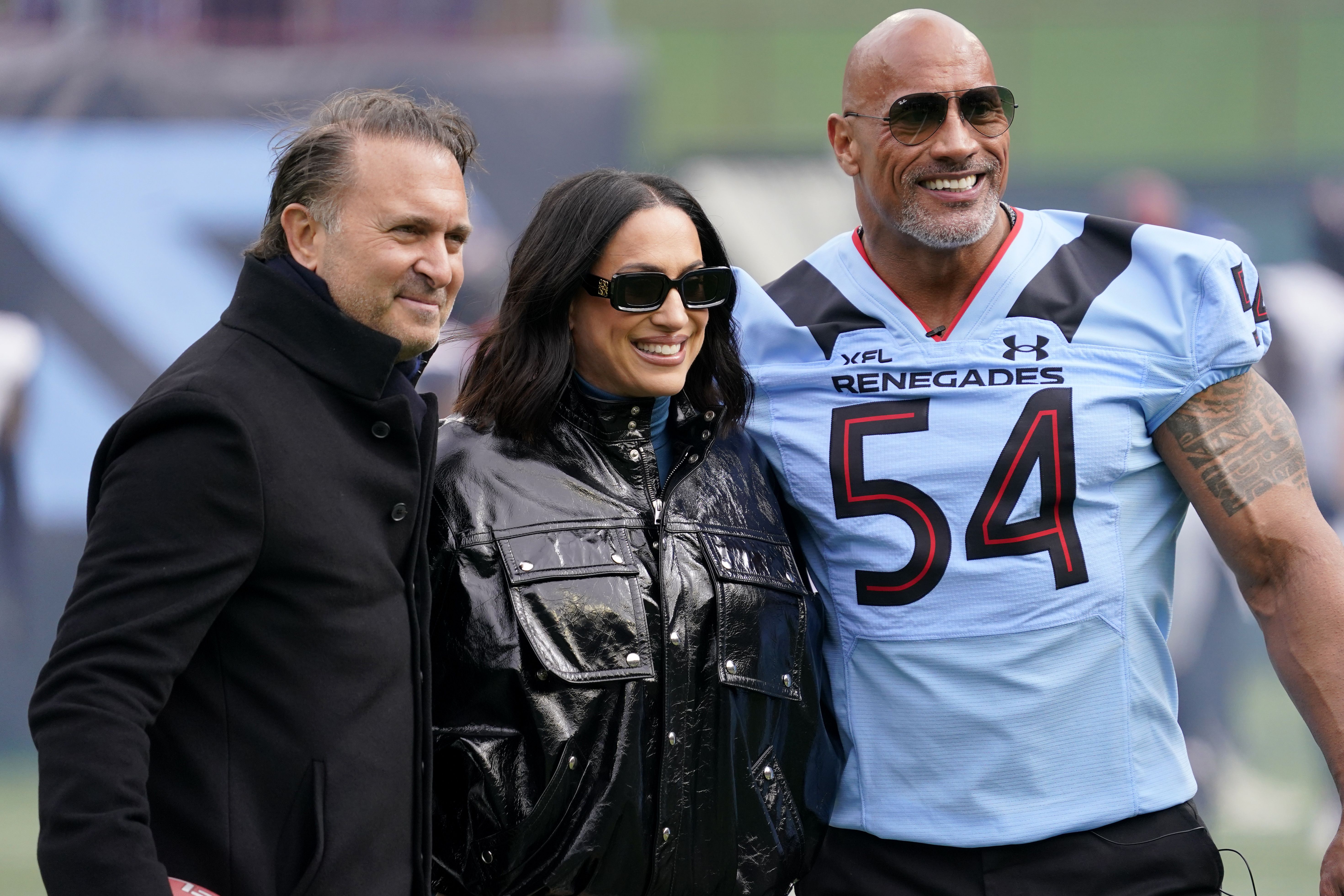Illustration: Aïda Amer/Axios
When the XFL came back to life for a third time this year, most football fans had the same response: "Again? What makes this time any different?" It's a fair question given the history of failed spring leagues — and one XFL co-owner Gerry Cardinale is eager to answer.
What they're saying: "What's different is we never set out to be a competitor to the [National Football League]," says Cardinale, who bought the XFL in 2020 alongside Dwyane "The Rock" Johnson and Dany Garcia. "We set out to be their partner and a worthy participant in the professional football ecosystem."
- The XFL 1.0 (2001) and United Football League (2009-12) took on the NFL, while the Alliance of American Football (2019) and XFL 2.0 (2020) were positioned more as feeder leagues. But the way Cardinale sees it, even the latter two failed to align with "The Shield."
- "It seemed to me that everybody tried to compete with the NFL," he says. "When you have the title of commissioner for a spring football league, what does that tell you? We don't have a commissioner. We run this like a live events and entertainment company."
State of play: The XFL 3.0 completed Week 6 on Monday, crossing the halfway point of its first regular season — and officially lasting longer than the 2020 version that fell victim to the pandemic.
- Highlights so far include the St. Louis Battlehawks drawing an XFL record 38,310 fans, ex-NFL QB A.J. McCarron playing like an MVP, a fully transparent replay system, and the passionate fanbase fueling the undefeated D.C. Defenders.
- The lowlight has been viewership, which is way down from 2020 (though the lack of March Madness in 2020 makes a comparison tricky). Ratings did rebound this week thanks to fewer games on FX and one game on ABC, which hit the million viewer mark.
Between the lines: The XFL's partnership with the NFL focuses on two main areas: rules innovation and player development.
- Rules innovation: The XFL is full of new rules (like tiered extra points and an onside kick alternative), and the NFL is watching closely. "We're consulting with the NFL and they're guiding us," says Cardinale.
- Player development: Roughly 65% of XFL players have NFL experience, and the other 35% would love some. "Our season ends May 13 to enable guys to compete for NFL roster spots," says Cardinale.
The big picture: The XFL's cozy relationship with the NFL suggests it could become a minor league of sorts, giving the NFL what the NBA (G League), MLB (MiLB) and NHL (AHL, ECHL) already have.
- Cardinale welcomes the comparison: "The minor league analogy is valid. That's an important part of this," he says.
- "We would be proud to develop players and have them go to the NFL. And also vice versa, with players coming from the NFL down to the XFL."
Yes, but: The NFL already has a de-facto minor league called college football, which sustains itself. If the NFL decides that's all it needs, the XFL's future as a feeder league — which may be its only shot at survival — goes up in smoke.
What to watch: Garcia has already guaranteed a second season in 2024, which is significant. But before the XFL can start looking ahead to next year, there's an imminent threat on the horizon: the United States Football League.
- Yes, another spring league (also a reboot) kicks off on April 15, and the rivalry has already started, with one USFL ad calling the XFL a "Hollywood knockoff" — an apparent dig at The Rock being involved.
- "We got a big laugh out of that," the famous actor told USA Today. "Also, it's much easier to talk trash when you're hiding behind the corporate walls and a computer. We're very forward facing. We're not hard to find."
Source: Read Full Article




